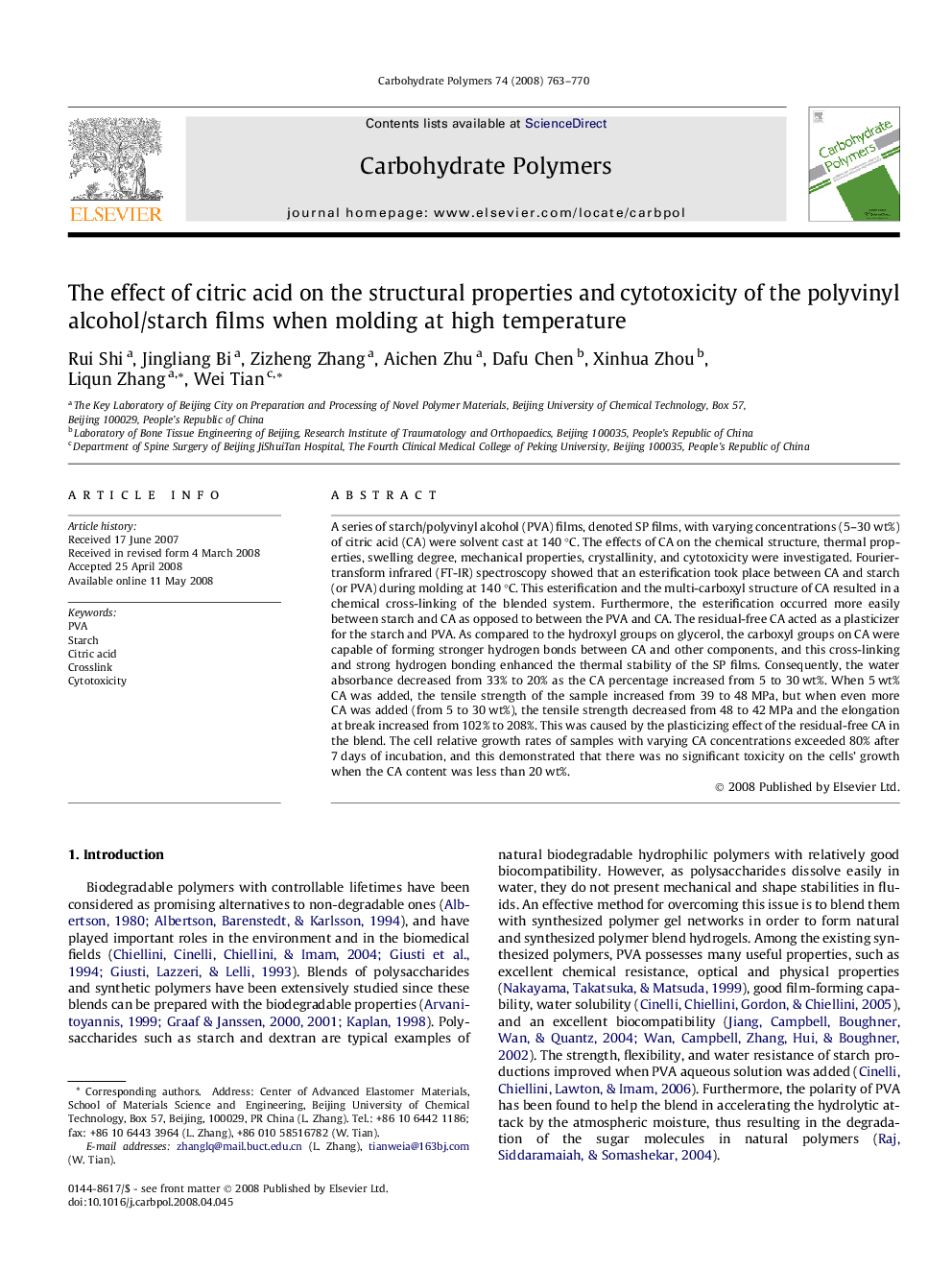| Article ID | Journal | Published Year | Pages | File Type |
|---|---|---|---|---|
| 1384303 | Carbohydrate Polymers | 2008 | 8 Pages |
A series of starch/polyvinyl alcohol (PVA) films, denoted SP films, with varying concentrations (5–30 wt%) of citric acid (CA) were solvent cast at 140 °C. The effects of CA on the chemical structure, thermal properties, swelling degree, mechanical properties, crystallinity, and cytotoxicity were investigated. Fourier-transform infrared (FT-IR) spectroscopy showed that an esterification took place between CA and starch (or PVA) during molding at 140 °C. This esterification and the multi-carboxyl structure of CA resulted in a chemical cross-linking of the blended system. Furthermore, the esterification occurred more easily between starch and CA as opposed to between the PVA and CA. The residual-free CA acted as a plasticizer for the starch and PVA. As compared to the hydroxyl groups on glycerol, the carboxyl groups on CA were capable of forming stronger hydrogen bonds between CA and other components, and this cross-linking and strong hydrogen bonding enhanced the thermal stability of the SP films. Consequently, the water absorbance decreased from 33% to 20% as the CA percentage increased from 5 to 30 wt%. When 5 wt% CA was added, the tensile strength of the sample increased from 39 to 48 MPa, but when even more CA was added (from 5 to 30 wt%), the tensile strength decreased from 48 to 42 MPa and the elongation at break increased from 102% to 208%. This was caused by the plasticizing effect of the residual-free CA in the blend. The cell relative growth rates of samples with varying CA concentrations exceeded 80% after 7 days of incubation, and this demonstrated that there was no significant toxicity on the cells’ growth when the CA content was less than 20 wt%.
